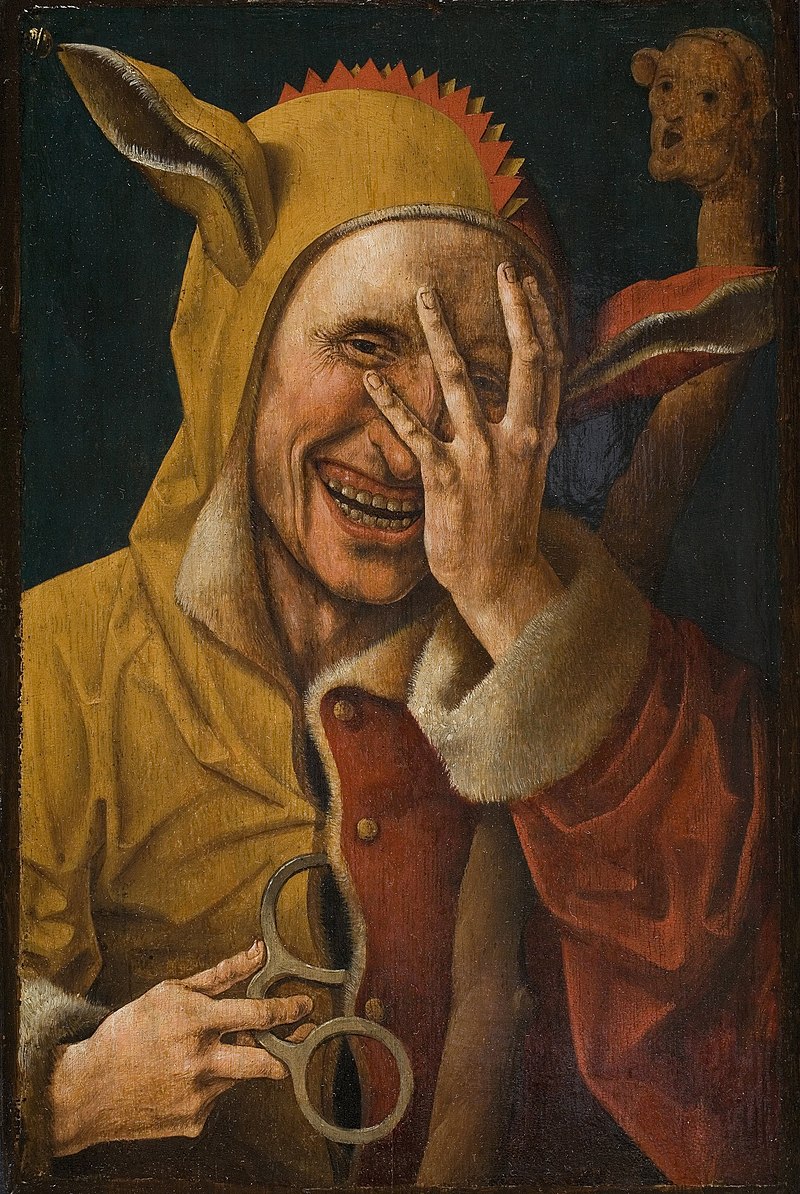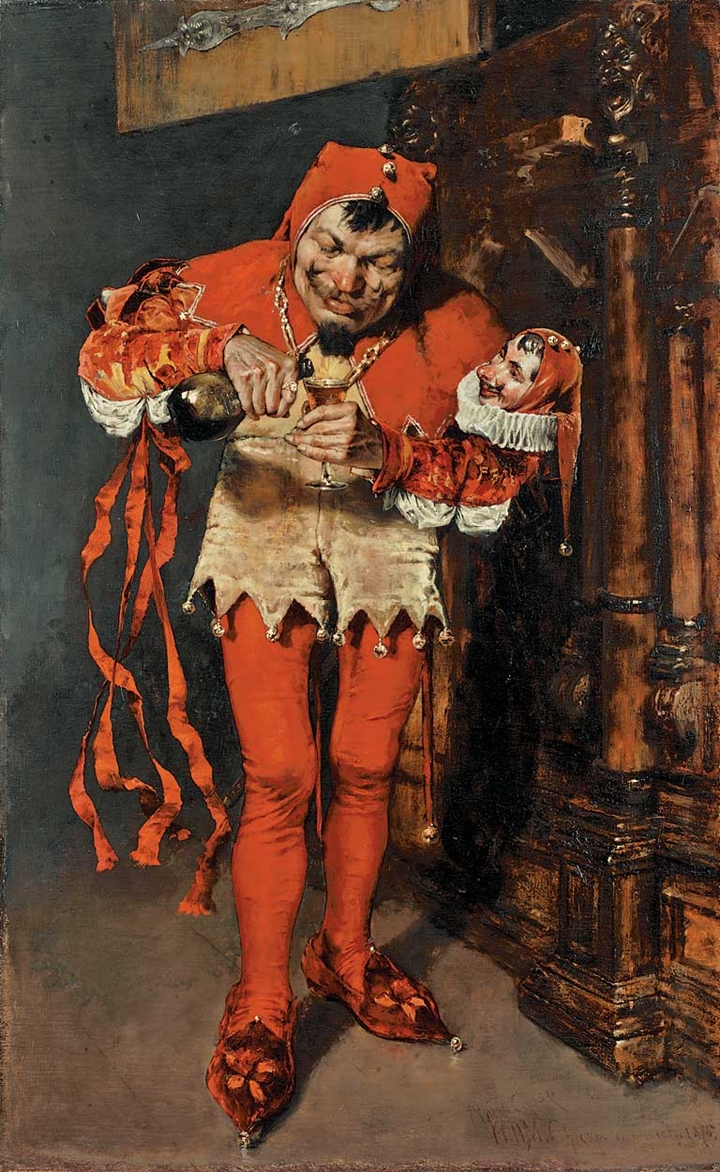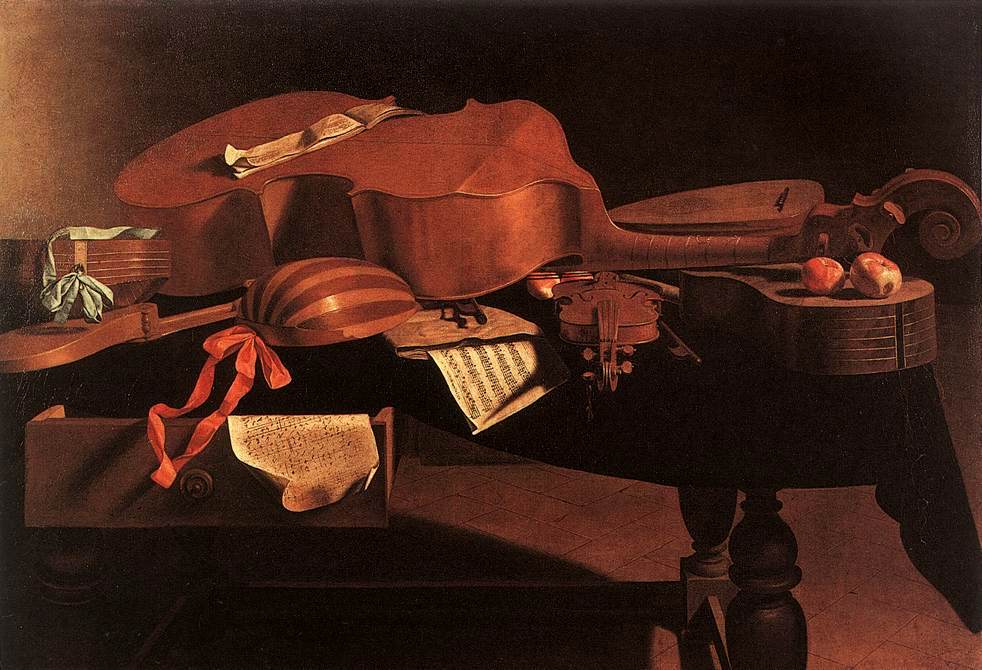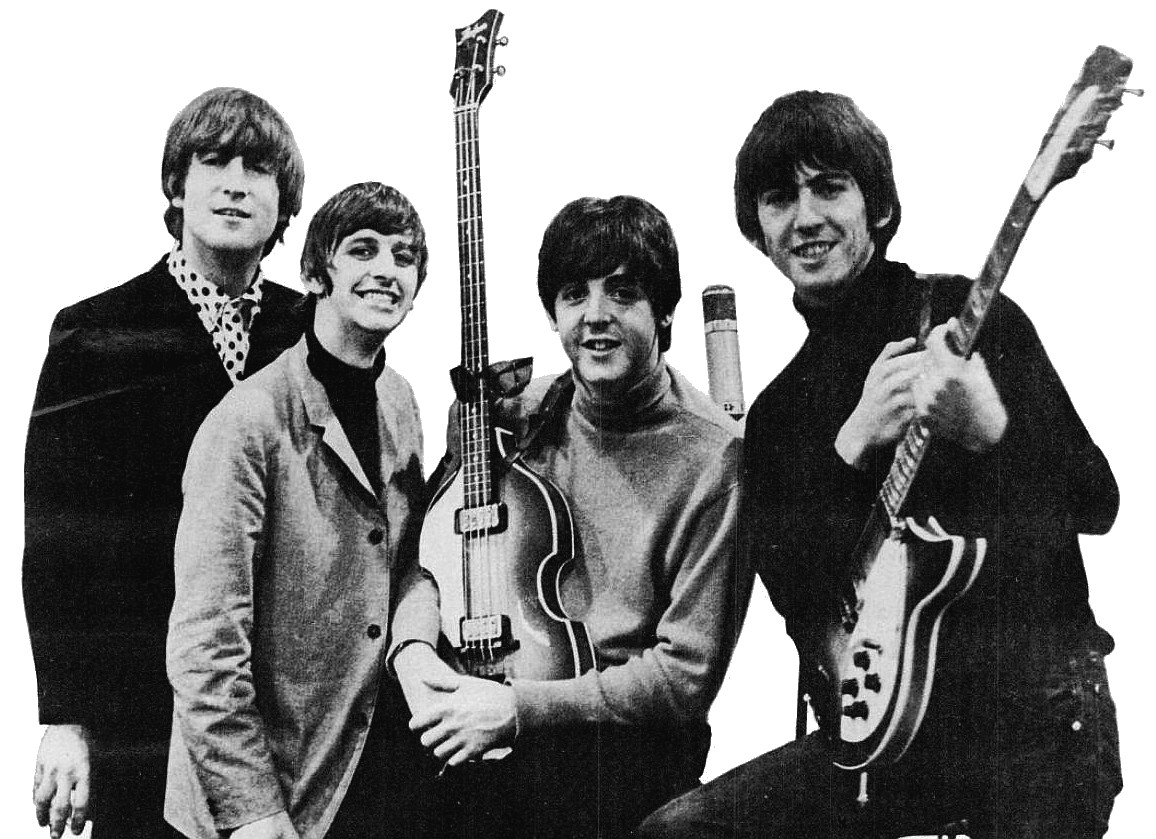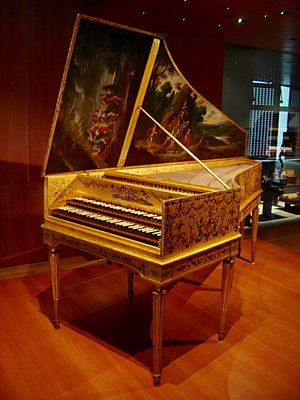P. D. Q. Bach is a fictitious composer invented by musical satirist "Professor"
Peter Schickele. Schickele developed a five-decade-long career, performing the "discovered" works of the "only forgotten son" of the
Bach family. Schickele's music combines
parodies of
musicological scholarship, the conventions of
Baroque and
classical music, and
slapstick. The name "P.
D.
Q." is a parody of the three-part names given to some members of the
Bach family that are commonly reduced to initials, such as C.
P.
E., for
Carl Philipp Emanuel Bach.
PDQ is an
initialism for "
pretty damned quick".
Schickele began working on the character while studying at the
Aspen Music Festival and School and at
Juilliard,
[1] and has performed a variety of P. D. Q. Bach shows over the years.
The Village Voice mentions the juxtaposition of collage, bitonality, musical satire, and orchestral surrealism in a "bizarre melodic stream of consciousness". "In P.D.Q. Bach he has single-handedly mapped a musical universe that everyone knew was there and no one else had the guts (not simply the bad taste) to explore."
[2] As of 2012 he has decreased touring due to age. He performed two concerts to commemorate the 50th anniversary of his first concert at
The Town Hall in New York on December 28 and 29, 2015,
[3] and continues to have live concert performances.
[4]
Biography[edit]
Schickele gives a humorous fictional biography of the composer
[5] according to which P. D. Q. Bach was born in Leipzig on April 1, 1742,
[6] the son of
Johann Sebastian Bach and
Anna Magdalena Bach; the twenty-first of Johann's twenty children.
[5] He is also referred to as "the youngest and oddest of Johann Sebastian’s 20-odd children."
[7] He died May 5, 1807,
[8] though his birth and death years are often listed on album literature in reverse, as "(1807–1742)?".
[9] According to Schickele, P. D. Q. "possessed the originality of
Johann Christian, the arrogance of
Carl Philipp Emanuel, and the obscurity of
Johann Christoph Friedrich."
[5](p23)
Schickele's works attributed to P. D. Q. Bach often incorporate comical rearrangements of well-known works of other composers. The works use instruments not normally used in orchestras, such as the
bagpipes,
slide whistle,
kazoo, and fictional or
experimental instruments such as the pastaphone (made of uncooked
manicotti),
[10] tromboon,
[11] hardart,
lasso d'amore,
[12] and left-handed sewer flute.
There is often a startling juxtaposition of styles within a single P. D. Q. Bach piece. The
Prelude to Einstein on the Fritz, which alludes to
Philip Glass' opera
Einstein on the Beach, provides an example. The underlying music is
J.S. Bach's first prelude from
The Well-Tempered Clavier, but at double the normal speed, with each phrase repeated interminably in a
minimalist manner that parodies Glass's. On top of this mind-numbing structure is added everything from
jazz phrases to snoring to heavily-harmonized versions of "
Three Blind Mice" to the chanting of a meaningless phrase ("Koy Hotsy-Totsy," alluding to the art film
Koyaanisqatsi for which Glass wrote the score). Through all these mutilations, the piece never deviates from Bach's original harmonic structure.
[13]
The humor in P. D. Q. Bach music often derives from violation of audience expectations, such as repeating a tune more than the usual number of times,
resolving a musical chord later than usual or not at all, unusual key changes, excessive dissonance, or sudden switches from
high art to
low art.
[14] Further humor is obtained by replacing parts of certain classical pieces with similar common songs, such as the opening of
Brahms' Symphony No. 2 with "
Beautiful Dreamer", or rewriting Tchaikovsky's
1812 Overture as the
1712 Overture, with
Yankee Doodle replacing Tchaikovsky's melody, and
Pop Goes the Weasel replacing
La Marsellaise.
Compositional periods[edit]
Schickele divides P. D. Q. Bach's fictional musical output into three periods: the Initial Plunge, the Soused Period, and Contrition. During the Initial Plunge, P. D. Q. Bach wrote the
Traumerei for solo piano, an
Echo Sonata for "two unfriendly groups of instruments", and a
Gross Concerto for Divers Flutes, two Trumpets, and Strings. During the Soused (or Brown-Bag) Period, P. D. Q. Bach wrote a
Concerto for Horn & Hardart, a
Sinfonia Concertante, a
Pervertimento for Bicycle, Bagpipes, and Balloons, a
Serenude, a
Perückenstück (literally German for "Hairpiece"), a Suite from
The Civilian Barber (spoofing
Rossini's
The Barber of Seville), a
Schleptet in E-flat major, the half-act opera
The Stoned Guest (the character of "The Stone Guest" from
Mozart's
Don Giovanni), a
Concerto for Piano vs. Orchestra,
Erotica Variations (
Beethoven's
Eroica Variations),
Hansel and Gretel and Ted and Alice, an opera in one unnatural act (
Humperdinck's
Hansel and Gretel and the 1969 film
Bob & Carol & Ted & Alice),
The Art of the Ground Round (
Bach's
The Art of Fugue), a
Concerto for Bassoon vs. Orchestra, and a
Grand Serenade for an Awful Lot of Winds and Percussion.
[5]
During the Contrition Period, P. D. Q. Bach wrote the cantata
Iphigenia in Brooklyn (
Gluck's
Iphigenia in Aulis, etc.), the oratorio
The Seasonings (
Haydn's
The Seasons),
Diverse Ayres on Sundrie Notions, a
Sonata for Viola Four Hands,
[15] the chorale prelude
Should, a
Notebook for Betty Sue Bach (
Bach's
Notebook for Anna Magdalena Bach and
Buddy Holly's "
Peggy Sue"), the
Toot Suite, the
Grossest Fugue (
Beethoven's
Grosse Fuge), a
Fanfare for the Common Cold (
Copland's
Fanfare for the Common Man) and the canine cantata
Wachet Arf! (Bach's
Wachet auf).
[5]
A final work is the mock religious work
Missa Hilarious (
Beethoven's
Missa Solemnis) (Schickele no. N
2O – the chemical formula of
nitrous oxide or "laughing gas").
[16]
Tromboon[edit]

Tromboon detail; the bassoon reed is on the left
The
tromboon is a musical instrument made up of the
reed and
bocal of a
bassoon, attached to the body of a
trombone in place of the trombone's
mouthpiece. It combines the sound of
double reeds and the
slide for a distinctive and unusual instrument. The name of the instrument is a
portmanteau of "trombone" and "bassoon". The sound quality of the instrument is best described as comical and loud.
The tromboon was developed by Peter Schickele, a skilled
bassoonist himself, and featured in some of his live concert and recorded performances. Schickele called it "a hybrid – that's the nicer word – constructed from the parts of a bassoon and a trombone; it has all the disadvantages of both".
[17][18] This instrument is called for in the scores of P. D. Q. Bach's
oratorio The Seasonings,
[19] as well as the
Serenude (for devious instruments) and
Shepherd on the Rocks, With a Twist.
[citation needed]
Recordings[edit]
Four of the Telarc P. D. Q. Bach recordings received Grammy awards in the Best Comedy Recording category. These were the four albums released from 1989 until 1992.
[20] Schickele also received a Grammy nomination in the Best Comedy Album category in 1996 for his abridged audiobook edition of
The Definitive Biography of P. D. Q. Bach.
[21]
See also[edit]
References[edit]
- Jump up ^ Schlueter, Paul. "P. D. Q. Bach satirist a seriously good humor man". www.mcall.com. Retrieved March 12, 2015.
- Jump up ^ Gann, Kyle. "Classical Trash". Village Voice. Retrieved 2016-02-21.
- Jump up ^ "Peter Schickele Brings P. D. Q. Bach Back to the Stage" by James R. Oestreich,The New York Times, December 16, 2015
- Jump up ^ "Peter Schickele Concert Schedule". schickele.com. Retrieved 20 February 2016.
- ^ Jump up to: a b c d e Schickele, Peter. The Definitive Biography of P. D. Q. Bach
- Jump up ^ Schickele, Peter. The Definitive Biography of P. D. Q. Bach, page 3: "the night of the 1st of April, 1742," "giving birth to his twenty-first child," "at one minute after midnight"
- Jump up ^ "Peter Schickele: 50 Years of P.D.Q. Bach: A Triumph of Incompetence!". Corning Civic Music Association. Retrieved 31 August 2017.
- Jump up ^ "P.D.Q. Bach Bio". schickele.com. Retrieved 20 February 2016.
- Jump up ^ "An Evening With P.D.Q. Bach (1807-1742)?". schickele.com. Retrieved 20 February 2016.
- Jump up ^ Blau, Eleanor (25 December 1998). "Oh, No! Still More (Quite a Bit More!) From P. D. Q. Bach". The New York Times. Retrieved 18 August 2012.
- Jump up ^ Tromboon at Dolmetsch Music Dictionary
- Jump up ^ Lasso d'amore at Dolmetsch Music Dictionary
- Jump up ^ Gann, Kyle (19 January 1999). "Classical Trash". The Village Voice. Retrieved 14 December 2015.
- Jump up ^ David Huron (2004). "Music-engendered laughter: an analysis of humor devices in PDQ Bach" (PDF). Proceedings of the 8th International Conference on Music. pp. 700–704.
- Jump up ^ The term four hands refers to the playing of one instrument, most commonly a piano, by two players at once.
- Jump up ^ "Portrait of P. D. Q. Bach". The Peter Schickele Web Site. Retrieved 14 December 2015.
- Jump up ^ "P. D. Q. Bach & Peter Schickele: The Jekyll and Hyde Tour". Retrieved 13 November 2008.
- Jump up ^ Dr David Shevin (5 August 2004). "A Viva For Elizabeth Lands". Retrieved 13 November 2008.
- Jump up ^ "The Seasonings, Oratorio for Soprano, Alto, Tenor, and Bass Soloists, SATB Chorus, and Orchestra by P. D. Q. Bach [Peter Schickele]", in Notes, Second Series, Vol. 30, No. 4 (June 1974), pp. 863–864. Last accessed 7 June 2008 (subscription required)
- Jump up ^ Biography page for Peter Schickele on Theodore Press Company's website
- Jump up ^ Past Winners Database page for the 1996 Grammy award nominees and winners on the Los Angeles Times website
Further reading[edit]
External links[edit]




